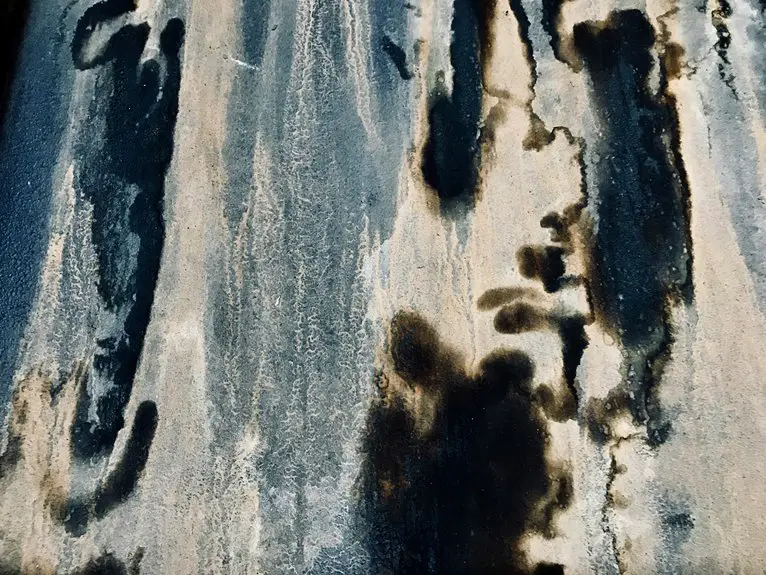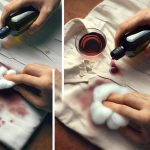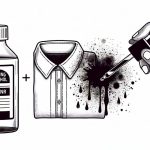If you spot mold or mildew on your leather sofa, start by gently wiping the affected area with a cloth dampened in equal parts water and rubbing alcohol. Avoid soaking the leather, and use a soft brush with mild leather cleaner for tougher spots. After cleaning, air dry the sofa in a ventilated space, then apply a leather conditioner to restore its softness. Keeping your space dry and well-ventilated helps prevent recurrence. To master every cleaning step, keep exploring these practical tips.
Table of Contents
Key Takeaways
- Identify mold or mildew by fuzzy, powdery patches and musty odor on the leather sofa.
- Use a soft cloth dampened with equal parts water and rubbing alcohol to gently wipe affected areas.
- Apply mild leather cleaner with a soft brush for stubborn mold spots, avoiding excess moisture.
- Air dry the leather naturally in a ventilated room and then apply a high-quality leather conditioner.
- Prevent future growth by ensuring good air circulation, controlling humidity, and cleaning spills immediately.
Identifying Mold and Mildew on Leather
Although leather is durable, it can still develop mold and mildew if exposed to moisture. You’ll notice mold on your leather sofa as fuzzy or powdery patches, usually white, green, or gray.
Leather can develop mold and mildew when exposed to moisture, appearing as fuzzy or powdery patches in white, green, or gray.
Mildew often appears as a flat, powdery substance, sometimes yellowish. These growths tend to form in damp, poorly ventilated areas or after spills left untreated. You might also detect a musty odor, a clear sign mold or mildew is present.
Check seams, creases, and the underside of cushions closely, as mold often hides there. Catching these signs early helps prevent damage and makes cleaning easier.
If you spot any discoloration or unusual texture on your leather, act swiftly to avoid lasting harm.
Preparing Your Cleaning Supplies
Gathering the right cleaning supplies is the first step to effectively removing mold and mildew from your leather sofa. You’ll need a soft cloth or microfiber towels to avoid scratching the leather. A gentle leather cleaner or a mild soap solution works best to prevent damage.
Prepare a spray bottle with distilled water to rinse off the cleaning agent without leaving residue. Have white vinegar on hand—it’s great for killing mold spores but must be diluted to protect your leather.
Also, keep a soft-bristled brush nearby for stubborn spots. Don’t forget disposable gloves to protect your skin and a mask to avoid inhaling mold spores.
Finally, make sure you have a well-ventilated space ready to dry the sofa after cleaning to prevent mold’s return.
Step-by-Step Cleaning Process
With your cleaning supplies ready, you can start tackling the mold and mildew on your leather sofa.
First, take a soft cloth dampened with a mixture of equal parts water and rubbing alcohol. Gently wipe the affected areas, avoiding soaking the leather.
Use a soft cloth dampened with equal parts water and rubbing alcohol to gently clean affected leather areas.
Next, use a clean, dry cloth to remove excess moisture. For stubborn spots, apply a small amount of mild leather cleaner with a soft brush, scrubbing lightly in circular motions. Be sure to test the cleaner on a hidden area first.
Afterward, wipe away any residue with a damp cloth, then dry immediately with another clean cloth. Repeat these steps until you see the mold and mildew disappear.
Remember to keep the room well-ventilated throughout the process to prevent mold from returning quickly.
Drying and Conditioning the Leather
Once you’ve thoroughly cleaned the mold and mildew, you need to dry the leather carefully to prevent damage. Avoid using direct heat sources like hairdryers or radiators, as they can dry out and crack the leather.
Instead, let the sofa air dry naturally in a well-ventilated room away from sunlight. Pat the surface gently with a soft, dry cloth to remove excess moisture.
After drying, it’s essential to condition the leather to restore its natural oils and flexibility. Apply a high-quality leather conditioner evenly using a soft cloth, following the product instructions.
This step helps prevent stiffness and cracking caused by moisture loss during cleaning. Allow the conditioner to absorb fully before using the sofa again, ensuring your leather stays supple and protected.
Preventing Future Mold and Mildew Growth
Keeping your leather sofa dry and well-conditioned helps reduce the chances of mold and mildew returning.
To prevent future growth, make certain your room has good air circulation by opening windows or using fans regularly. Avoid placing your sofa in damp or humid areas, like basements. Use a dehumidifier if moisture levels are high.
Clean spills immediately and wipe the sofa with a dry cloth to prevent moisture buildup. Condition the leather every few months to maintain its natural oils and create a protective barrier.
Finally, inspect your sofa regularly for any early signs of mold or mildew so you can act promptly. These simple steps will keep your leather sofa fresh, clean, and mold-free for years to come.
Frequently Asked Questions
Can Mold on Leather Cause Health Problems?
As the saying goes, “An ounce of prevention is worth a pound of cure.” Yes, mold on leather can cause health problems like allergies or respiratory issues, so you should address it promptly to protect your well-being.
Is It Safe to Use Bleach on Leather?
You shouldn’t use bleach on leather because it can damage and discolor it. Instead, opt for gentler cleaners designed for leather to protect the material while effectively removing stains or mold without causing harm.
How Often Should Leather Sofas Be Cleaned Professionally?
You don’t need to hire pros every week, but having your leather sofa professionally cleaned once or twice a year keeps it looking fabulous and prevents grime buildup. Trust me, your sofa will thank you for the royal treatment!
Can Mold Return After Cleaning?
Yes, mold can return after cleaning if you don’t control moisture and humidity. You’ll need to keep your space dry and ventilated to prevent mold from coming back on your leather sofa or any other surfaces.
Are There Specific Leather Types More Prone to Mold?
Back in the days of musketeers, you’d find that porous leathers like suede are more prone to mold. You should know smooth, sealed leather resists it better, so keep an eye on texture when choosing your sofa.
- How to Clean Mold and Mildew Off a Leather Sofa Safely - July 9, 2025
- How to Get Super Glue or Chewing Gum Off Your Leather Sofa - July 9, 2025
- How to Remove Water Stains From a Leather Sofa - July 9, 2025





